Search results for: 'Art'
-
 Egyptian New Year flask with ornamentation
Egyptian New Year flask with ornamentationHieroglyphic inscription expressing New Year wishes for Ptah at the beginning of the nile floodings. Important 26th dynasty piece associated with the Egyptian New Year rituals. The object is a fantastic example of the skilled workmanship and artistic quality of faience in ancient Egypt.
Price: on request Roman gold necklace
Roman gold necklaceSo-called foxtail chain from the Eastern Roman provinces, around the 3rd century AD. Breathtaking condition and timeless elegance. Theoretically still wearable today.
Price: on request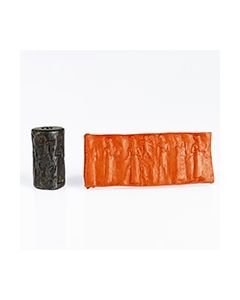 Rare cylinder seal with Old Babylonian and Old Assyrian engravings
Rare cylinder seal with Old Babylonian and Old Assyrian engravingsThis seal from Old Babylon has been reworked in Old Assyrian style, probably in Anatolia or Northern Syria. It tells a story of political and cultural diversity in the ancient Near East.
Price: on request Egyptian funerary cone of Amunemopet
Egyptian funerary cone of AmunemopetConoid clay nail from the tomb of crown prince Amunemopet. From Thebes during the 18th dynasty. New Kingdom of ancient Egypt.
Price: on request Bronze votive figurine of a bull
Bronze votive figurine of a bullNicely preserved bronze figurine. 2nd - 1st half 1st millenium BC. Bronze or Iron Age, Western Asia, probably Hittite.
Price: on request Bronze figurine of a horse from Roman era
Bronze figurine of a horse from Roman eraBeautiful small figurine, very well preserved, great green patina.
Price: on request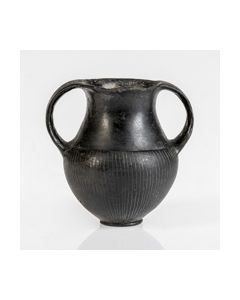 Etruscan amphora with flat handles found at Tarquinia
Etruscan amphora with flat handles found at TarquiniaFinely worked jar with ovoid body and trumpet-shaped mouth. From an old German collection, acquired in the 1950s. Said to have been found at Tarquinia.
Price: on request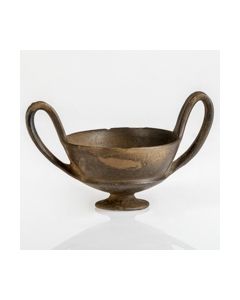 Etruscan kantharos with high handles found at Tarquinia
Etruscan kantharos with high handles found at TarquiniaFinely worked cup with high flat handles. From an old German collection, acquired in the 1950s. Said to have been found at Tarquinia.
Price: on request Tall bone pyxis
Tall bone pyxisInteresting cylindrical vessel with rich decoration. From antiquity or early Middle Ages.
Price: on request Small storage vessel from Early Bronze Age
Small storage vessel from Early Bronze AgeThe elegant vessel could be stringed and suspended to protect its content from animals. From Early Bronze Age Europe.
Price: on request Roman oil lamp with bust of Luna
Roman oil lamp with bust of LunaVery interesting and unusual mirror relief. From an old German private collection, acquired in a London gallery between 1976 and 1978.
Price: on request Tear shaped roman glass flask
Tear shaped roman glass flaskElegant long flask from Roman Imperial times. Fantastic colourful iridescence.
Price: on request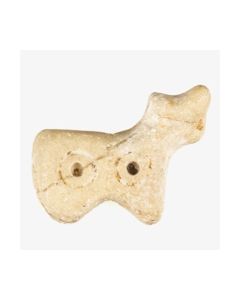 Sumerian ram amulet
Sumerian ram amuletNice small stone amulet in the stylized shape of a ram. From the 3rd Millenium BC.
Price: on request Unusual Greek Guttos from Magna Graecia
Unusual Greek Guttos from Magna GraeciaFeiner Ausgießer, seitlich vom Körper zeigend. Medaillon in der Mitte nicht ausgeführt, an seiner statt 5 Luftlöcher. Ansonsten im Magna Graecia - Stil.
Price: on request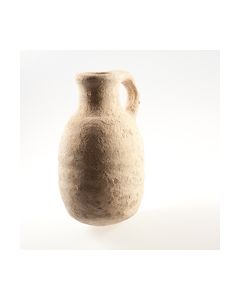 Schöpfkännchen aus der Lachisch III-Zeit, Palästina
Schöpfkännchen aus der Lachisch III-Zeit, PalästinaKrug mit seitlich angesetzem Henkel. Fund aus Palästina, Gefäßtyp aus Südpalästina. Perfekt erhalten. Mit originalen Fundablagerungen.
Price: on request Tongefäß aus der frühen Bronzezeit
Tongefäß aus der frühen BronzezeitFrühbronzezeitlicher Gefäßtyp. Vermutlich für Wasser, Öl oder sonstige Flüssigkeiten verwendet. Dezente Verzierungen. Ca. 3100 v. Chr. bis 2900 v. Chr.
Price: on request Keilschrifttafel aus der Ur III Zeit
Keilschrifttafel aus der Ur III ZeitMesopotamische Tontafel aus Ur mit administrativem Text in Keilschrift. Die Tafel datiert in die Zeit des Königs Shu-Suen (auch Shi-sin), der während der 3. Dynastie von Ur in Sumer und Akkad regierte. Der Text hält die Ausgabe von Essensrationen fest, namentlich die Menge eines Getreideeintopfes, die an 15 weibliche Mehlmahlerinnen ausgegeben werden soll. Jede von Ihnen hat 6 Quart zu erhalten, wobei die Gesamtmenge 90 Quart zu betragen hat.
Price: on request Sichel aus der Bronzezeit
Sichel aus der BronzezeitBronzezeitliche Knopfsichel mit fließend geformtem Sichelrund und einer flach-konkaven Klinge. 2. Hälfte des 2. Jt. v. Chr., Europa. 100mm lang.
Price: on request Sichel aus der Bronzezeit
Sichel aus der BronzezeitBronzezeitliche Knopfsichel mit fließend geformtem Sichelrund und einer flach-konkaven Klinge. 2. Hälfte des 2. Jt. v. Chr., Europa. 90mm lang.
Price: on request Tongefäß aus der frühen Bronzezeit
Tongefäß aus der frühen BronzezeitFrühbronzezeitlicher Gefäßtyp. Vermutlich für Wasser, Öl oder sonstige Flüssigkeiten verwendet. Rußspuren durch Befeuerung. Ca. 3100 v. Chr. bis 2900 v. Chr.
Price: on request Tongefäß aus der Bronzezeit
Tongefäß aus der BronzezeitVermutlich für Wasser, Öl oder sonstige Flüssigkeiten verwendet. Ende Frühe bis Mittlere Bronzezeit. Ca. 2500 v. Chr. bis 1500 v. Chr.
Price: on request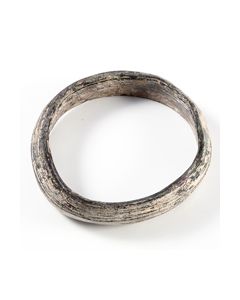 Römischer Glasarmreif
Römischer GlasarmreifAntiker Armreif aus schwarzem bis dunkelblauem Glas, mit Irideszenz. 1. bis 4. Jh. n. Chr., römische Zeit. In Schleudertechnik gefertigt. 70mm Durchmesser.
Price: on request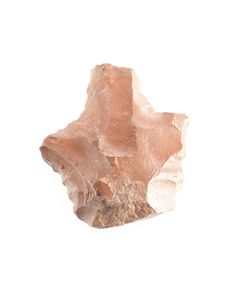 Pfeilspitze, Paläolithikum
Pfeilspitze, Paläolithikum35.000 bis 30.000 v.Chr., Jungpaläolithikum. Letzte Phase der Altsteinzeit, Homo sapiens.
Price: on request Pfeilspitze, Paläolithikum
Pfeilspitze, Paläolithikum35.000 bis 30.000 v.Chr., Jungpaläolithikum. Letzte Phase der Altsteinzeit, Homo sapiens.
Price: on request Roman earrings with garnet
Roman earrings with garnetMatching pair of jewellery made of gold with red gemstones. From the Roman Imperial period.
Price: on request Neolithic axe mounted for museum display
Neolithic axe mounted for museum displayThe stone tool is from the European Neolithic. A special feature is the museum-quality custom made shaft which gives a great impression of the tool's former mounting.
Price: on request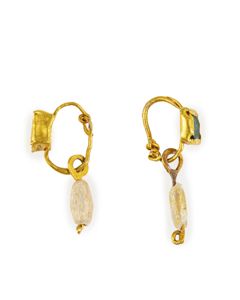 Pair of Roman gold earrings
Pair of Roman gold earringsThe earrings belong together originally. They are nicely decorated by beads and glass inserts. A beautiful pair of jewellery from the 3rd century.
Price: on request Roman globular glass bottle
Roman globular glass bottleBeautifully decorated with bands of incised decorative grooves. Spherical body and funnel-shaped neck.
Price: on request Roman glass jug with handle
Roman glass jug with handleA fine glass vessel from the 1st to 2nd century. Made in the eastern Mediterranean.
Price: on request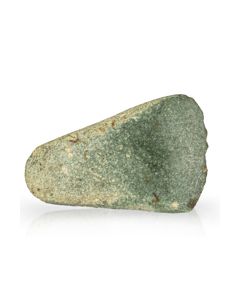 Neolithic axe head
Neolithic axe headNicely crafted Stone Age tool made of jadeite. From southern France.
Price: on request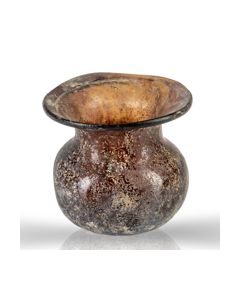 Roman glass bottle
Roman glass bottleThe small glass vessel with a spherical body shows beautiful violet reflections and violet-brown transmissions. From the third century.
Price: on request Neolithic axe head
Neolithic axe headNicely crafted Stone Age tool made of jadeite. From southern France.
Price: on request Neolithic axe head
Neolithic axe headNicely crafted Stone Age tool made of jadeite. From southern France.
Price: on request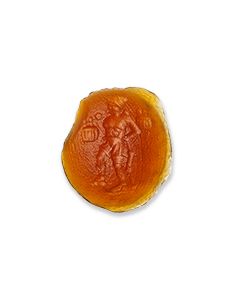 Roman intaglio with Odysseus as a beggar
Roman intaglio with Odysseus as a beggarThe roman intaglio shows an important scene from the Odyssey in which Odysseus returns home after his long journey. The hero is disguised as a beggar. He wears his pilos hat and is resting his weight on a stick.
Price: on request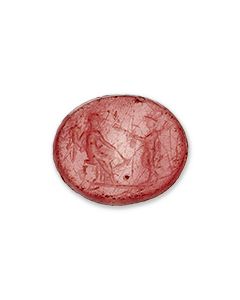 Roman intaglio with Hermes and Tyche
Roman intaglio with Hermes and TycheThe ancient intaglio from Roman times shows a scene between the two gods. From the Professor Brosch collection of engraved gems.
Price: on request Roman intaglio with Calydonian boar hunt
Roman intaglio with Calydonian boar huntNice ring insert made of composite glass. Its imprint shows the moment of the mythological boar hunt in which Meleager slays the beast.
Price: on request

